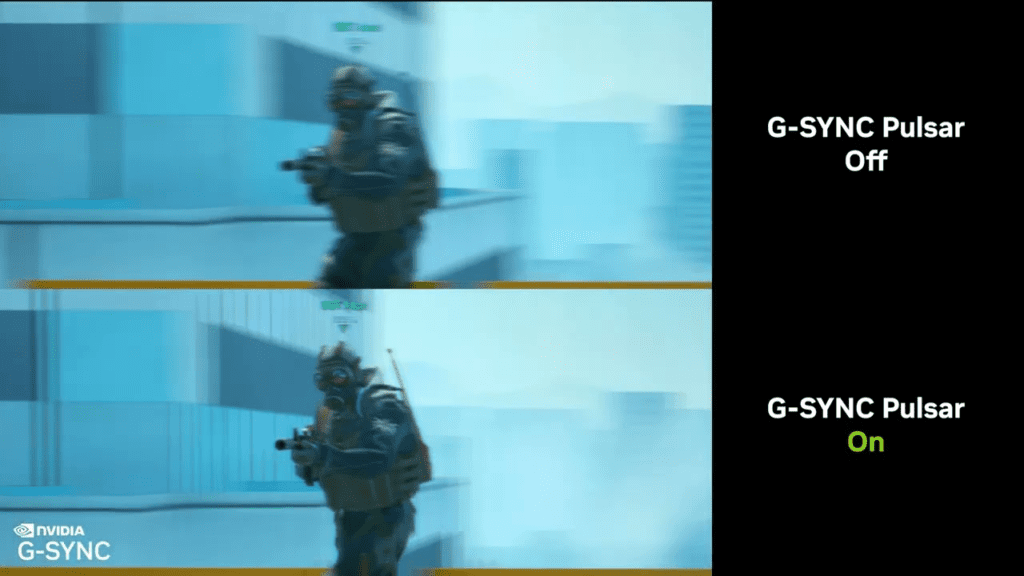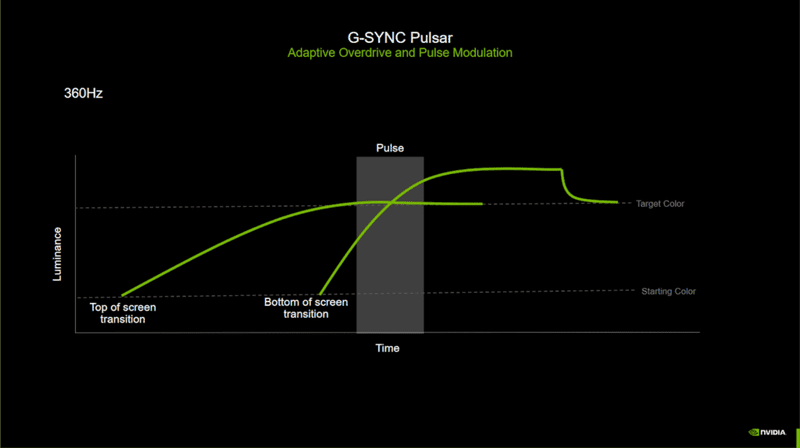NVIDIA AND ROG G-SYNC Powers Next-Gen Gaming Monitors
Asus constantly push the limits of what is conceivable for a gaming monitor here at ROG. Asus introduced the first WQHD display with native NVIDIA G-SYNC implementation in 2014, and it reached 144Hz. With displays that run at 240Hz, 360Hz, and now 540Hz, Asus have unlocked new speed levels. Asus are pleased to present G-SYNC Pulsar, the next generation of variable refresh rate (VRR) technology. This ground-breaking technology, created by NVIDIA, will be seen in an upcoming ROG Swift 360Hz display. It offers 4x effective motion clarity along with stutter-free smoothness.
A succinct overview of blur
Motion blur has persisted as an annoying component of gaming displays despite their evolution over time. Motion blur is partially caused by sluggish LCD transitions. Each pixel needs to receive a new color value before a new frame can be shown, and it takes a little but discernible amount of time for each pixel to change to the new color. You see this entire transition on a standard LCD display with an always-on backlight. There is motion blur during this apparent change.

However, there’s more. Additionally, you notice blur because contemporary displays show each frame using a technique known as sample-and-hold. An LCD display draws a frame and keeps it there until the next frame is drawn, in contrast to older CRTs where a frame “fades” after it is drawn. This is significant because, even in cases where the display itself isn’t blurring, it produces a sort of “blur” that you experience. It occurs when your eyes attempt to follow moving objects through still images. It is an issue with your eyes, not the display, but it is something that can be fixed with the correct display technology.
The difficulties in integrating backlight strobing with VRR
Low response times, such as those found on Asus ROG OLED gaming monitors, can help reduce the first kind of motion blur. They change colors almost instantly, with response times as low as 0.02 ms (GTG). Variable Overdrive technology on LCD screens does a fantastic job of removing sluggish pixel transitions as well.
Backlight strobing is the best solution for the second type of motion blur. The backlight is turned off in between pixel refreshes using basic backlight strobing techniques. This technology means that pixels on displays only show when their color is accurate, and because each image is only displayed momentarily while the backlight strobes, the persistence effect that is seen by our eyes is virtually eliminated.
Regrettably, variable refresh rate (VRR) technology has not historically been compatible with backlight strobing. Since strobing the backlight at a variable frequency can result in issues like flickering, dimmer images, and a double-image effect, gamers have essentially had to choose between the two technologies. Because of this, even though backlight strobing was intended with their use case in mind, competitive gamers frequently decide against using it.
G-SYNC Pulsar overcomes the obstacles
That’s all going to change soon. Asus have been battling this issue for years, and they have been collaborating closely with NVIDIA to create an innovative solution. G-SYNC Pulsar is the end product. In order to achieve the necessary precise timing for efficient backlight strobing while maintaining the fluidity of VRR timing, G-SYNC Pulsar employs a unique algorithm that dynamically modifies the strobing patterns to the render rates, even as these rates naturally change over time.

Together, these two essential components make a difference. Adaptive Overdrive reduces motion blur and ghosting by dynamically adjusting the pixel transition times. G-SYNC Pulsar modulates overdrive based on refresh rate and screen location to account for different refresh rates. This guarantees that you will always have a clear, blur-free experience across the whole screen, regardless of how high or low the refresh rate is.
Pulse modulation is the second component. The G-SYNC Pulsar algorithm regulates the brightness and length of each backlight pulse for smooth, comfortable viewing. This dynamic process adjusts each pulse adaptively in response to variations in the game render rate.
You can take advantage of both the familiar and beloved benefits of G-SYNC and backlight strobing when these adaptive strategies come together. Play without any tearing, flickering, blurring, or stuttering, all because of G-SYNC Pulsar.
G-SYNC Pulsar, which will soon be available in gaming monitors near you, precisely synchronizes backlight and overdrive pulse with a screen’s refresh cycle, resulting in performance levels for gaming monitors never before seen. For players who require perfect visual clarity to keep up with the action during fast-paced games, it’s the ultimate competitive advantage.
G-SYNC Pulsar is currently being developed by ROG and NVIDIA to be available on your gaming desk. Stay tuned for more information as Asus are not yet ready to reveal all of this monitor’s jaw-dropping features. Asus are preparing to make another change to the display game, which they have already made.

